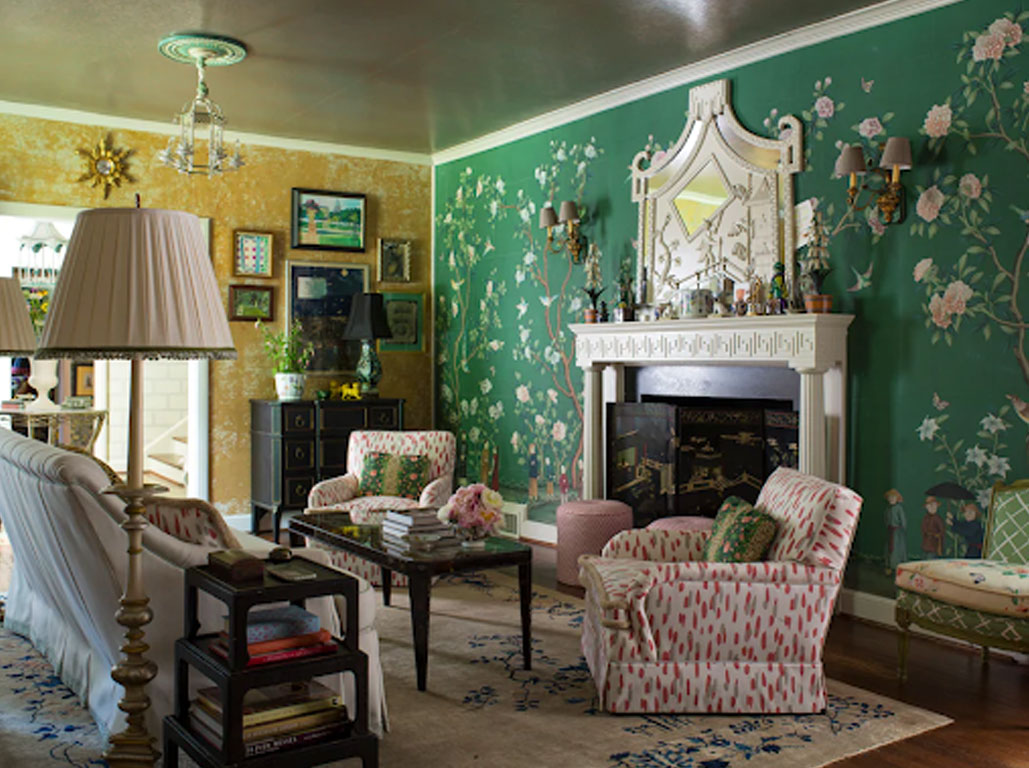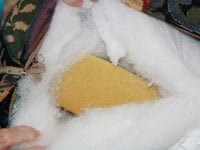Reupholster or Buy New

To decide to reupholster or purchase new is a hard decision. Looking at the above room and trying to find the perfect chair with the fabric that makes the statement desired sometimes can become overwhelming and you may think it would be easier to reupholster. I said “easier” not necessarily less expensive. The cost to reupholster a chair is app $500 then you have to add 8 yards of fabric. Fabrics may range from $25 per yard to $250 per yard. With that in mind the finished piece may cost on the high end $2500 the low end $700. If you could find the perfect chair with the perfect fabric it might behoove you to purchase a new chair but if you can’t find what you are wanting, we can reupholster and breathe new life into your old piece. The chair may need new foam, new springs or new down fill which would add to your cost. Send a picture of your piece of furniture along with the condition of the piece and we can give you an estimate on what the cost would be to help you make that decision.
Here is some terminology used in fabrication that might be beneficial for you to know.
Bias-cut When making cording for welting it is best to cut it on the bias. This means to cut from one corner of the fabric to the opposite. So if your piece of furniture has cording on it, it would be best to cut it on the bias. If you are wanting to use a contrast fabric this would be calculated separately.
Welting: A fabric-covered cord that is sewn into an upholstery seam. Welted edges define the silhouette of a piece of furniture and strengthen the seams. Patterned fabric is typically bias-cut for welting. Smooth welted seams are a sign of quality upholstery.
Nap is the term used when using velvet. There is a definite direction to a nap of velvet and can change the look of the color when seen from a horizontal plane versus a vertical plane. Keep this in mind when choosing a velvet.
Deck: The flat platform under an upholstered chair’s seat cushion, usually covered in plain fabric. The deck should be firmly resilient, and you should not be able to feel the springs.
Fabric backing: The extra layer applied to certain fabrics, such as chenille, for upholstery applications. Without backing, they will stretch and sag. Look for fabrics marked “upholstery weight” or “all-purpose.”
Gimp: A tightly woven fancy trim that resembles a braided ribbon. On upholstered furniture, gimp is most commonly used to conceal tacks where the fabric meets an exposed wood frame.
Pattern match: The layout of fabric pieces so that pattern flows unbroken across seams and cushions. Done well, seams will be nearly invisible. Large-scale patterns may require substantially more yardage.
Railroading: Cutting fabric on the cross-grain, usually to avoid seams in large upholstered pieces. Fabric is also referred to as railroaded when the pattern runs horizontally off the bolt. Fabrics with directional patterns or pile (such as velvet) should not be railroaded.
Up the roll: Applied to furniture with the pattern or pile running vertically and the fabric cut on the straight grain. The opposite is railroading, in which the fabric is run sideways.
Repeat: One complete cycle of a pattern in fabric or wallpaper. A textile with a large repeat will require substantially more yardage to upholster a piece than a solid fabric, particularly when applied to a sofa.
Selvage: Tightly woven edges that prevent the fabric from fraying on the roll. The selvage must be cut away for many fabrics to drape smoothly.
Tight-back: Having no loose or semi-attached back cushions. This style of upholstery looks tailored but can be less comfortable for lounging and is harder to clean than loose cushions.
Upholstery projects have the ability to transform tired, worn-looking spaces, especially when care is given to the selection of colors, fabric patterns, and the style you’re trying to achieve. However, the most important part of any upholstered item is what you don’t see.
Hidden beneath the fabric exterior are the “guts” of your furniture, including:

- Batting
- Adhesives
- Springs
- Stuffing
- Webbing
The type of stuffing material will depend on how the upholstered furniture is to be used and the comfort level you are seeking.
Batting
In cushions and other upholstery, batting is applied over the foam to prevent slippage and provide a smooth appearance. The thickness (loft) of batting can range from very thin up to 1/4″ thick. Batting is available in cotton, wool, polyester, or a blend.
Cotton Batting
Cotton batting is made from 100% cotton that has been layered. There are two weights available:

- 26.5 oz. (thin)
- 42.3 oz. (thick)
The weight is determined by the type of project you are working on, but both weights are suitable for upholstery.
Cotton is a natural fiber that can poke through the fabric covering, making the furniture uncomfortable to sit on. If you are upholstering a headboard, this may not be a concern; but it may cause problems on seating for sofas and chairs. If so, a combination poly/cotton batting may be the answer. It’s durable and will give your furniture a smooth look and feel.
Wool Batting
Wool batting is made from wool waste that has been woven together and is available as:
- Needled Wool Batting: Strong and durable and most commonly used to cover springs in upholstery, though it can be used for stuffing as well.
- Layered Wool Batting: Not recommended for upholstery, as it falls apart easily, which can affect the appearance of the furniture over time.
Animal Hair and Feathers
The use of animal hair is one of the oldest types of upholstery stuffing. The hair used is most often from the manes and tails of horses and is often found in antique furniture. When reupholstering antiques, the existing horse hair can be combined with wool or cotton to add additional loft to the piece.
While not actually “hair”, feather and down is often used in upscale furniture to provide the ultimate in comfort.
For the expert upholsterer, upholstery webbing is like our bread and butter. Upholstery webbing is the material found in most sitting furniture, such as chairs or sofas, that is used to create a firm seat for the cushion. Without webbing, your furniture projects won’t have that same firmness and your furniture would be unusable.
Good webbing should have the right combination of strength and flexibility for your project. You want the webbing to be firm enough for comfortable seating yet flexible enough not to break under pressure.
That is a lot of terminologies to remember. Being familiar with the terms is really all you need to know. I will help and guide you through the questions of reupholstery to make sure we have covered everything before quoting your project. Just give me a call.





